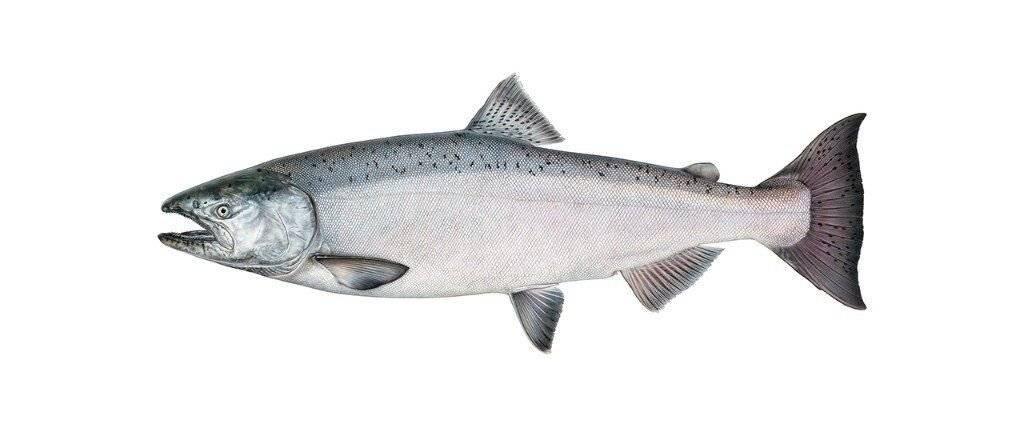Chinook (King) Salmon Fishing in Alaska
Alaska’s state fish, the coveted King salmon (Chinooks), is by far the most desired salmon Alaska has to offer. Few, if any, fish are more prized by fishermen, than this giant of the salmon family. The Chinook can grow to more than 100 pounds–and also has the highest fat content of all the five Pacific salmon species. It is generally considered the most delicious, and its secondary name–the King salmon–is absolutely appropriate in more ways than one. A barbecued steak of a king, lightly salted, peppered, and drizzled with lemon juice, takes seafood lovers into epicurean heaven.
Rainbow King Lodge is the best place for king salmon fishing in Alaska. Fishers from everywhere come here to experience the best in Chinook salmon fishing, making Rainbow King Lodge one of the premier king salmon Alaska fishing lodges.
Kings run on the Nushagak peak in late June and July. Although King Salmon is available in all regions of the state, the biggest runs occur in the Nushagak River. The Nushagak River flows 280 miles out of the Alaskan Range to Bristol Bay. Along its 280 miles, the “Nush” picks up many salmon breeding tributaries, including the Mulchatna, Nuyakuk, and King Salmon Rivers, these and dozens of smaller tributaries, make the Nushagak River drainage the best salmon fishing in Alaska. We have a King Salmon Camp located on the most sought-after piece of riverside property anywhere in Alaska. Join us to experience King Salmon fishing as you have only dreamed about.
Kings are fished for in both fresh and saltwater, with the best fishing occurring in the large, long rivers that they spawn in. Averaging 18-30 lbs, the chinook can reach 80 lbs or more in some river systems and represents the pinnacle of the North American freshwater fishing experience.
The adult King Salmon is a handsome, robust-looking fish with many small black spots or blotches sprinkled along the gun-metal blue back and fins. The tail fin or caudal fin is spotted from top to bottom, which differentiates it from the coho, which is only spotted on the upper half of the tail. It also has a black gum and mouth lining; coho internal mouth linings are gray or white. Spawning adults lose their bright silvery coloration or take on a maroon or olive-brown coloration, with males looking darker than females. Spawning males will also develop a hooked snout and slightly humped shoulder which is absent in spawning females. The closer the fish are to actual spawning, the darker their coloration becomes.
Contact Us Today For Your King Salmon Fishing Trip!
The giant king salmon was designated the state fish of Alaska in 1962 (also called Chinook salmon, spring salmon, quinnat, tyee, tile, and blackmouth salmon). If you’re ready for an unforgettable fishing adventure to catch king salmon, contact Rainbow King Lodge today to find out how soon your experience can begin.

